E-commerce Checkout Flow in Brazil
Last updated: 9 December 2014
Designing and localizing the checkout flow is important for maximising the revenue per visitor. In this article we will see how a typical Brazilian checkout flow look like in comparison to a US checkout.
For many years online shopping and e-commerce have been targeting the upper middle class of the Brazilian society. However, year by year, new consumers are introduced to e-commerce in Brazil and the diversity both in financial resources and literacy make it increasingly difficult to localize and optimise the checkout flow.
On the one hand you do not want to confuse your customers with a large amount of upsell options risking to lower the conversion rate, but on the other hand you risk to reduce the order value by excluding upsell options.
In this article we will highlight typical differences between purchasing physical goods online in USA compared to Brazil. The examples in this article are selected to highlights how companies localise and customise their checkout flow in Brazil.
Step 1: Add Product to Basket
The product page provide similar information in Brazil and USA. Both pages provide information regarding the availability of the product as well as shipping options.
When clicking the "buy" button in Brazil you are normally redirected directly to the shopping basket with the product and you can start your checkout directly. This is clearly designed to be simple and to minimize possible distractions.
On similar US e-commerce sites the "buy" button first provide you with a offering with additional warranty, then redirect you to a page confirming that the product was added to basket including a list with complementary products that you might need. Only after explicitly clicking a shopping basket button your are directed to the shopping basket with the product and can start your checkout flow.
Some Brazilian e-commerce sites will additional products and services similar to what is normal in US, however this is not the norm.
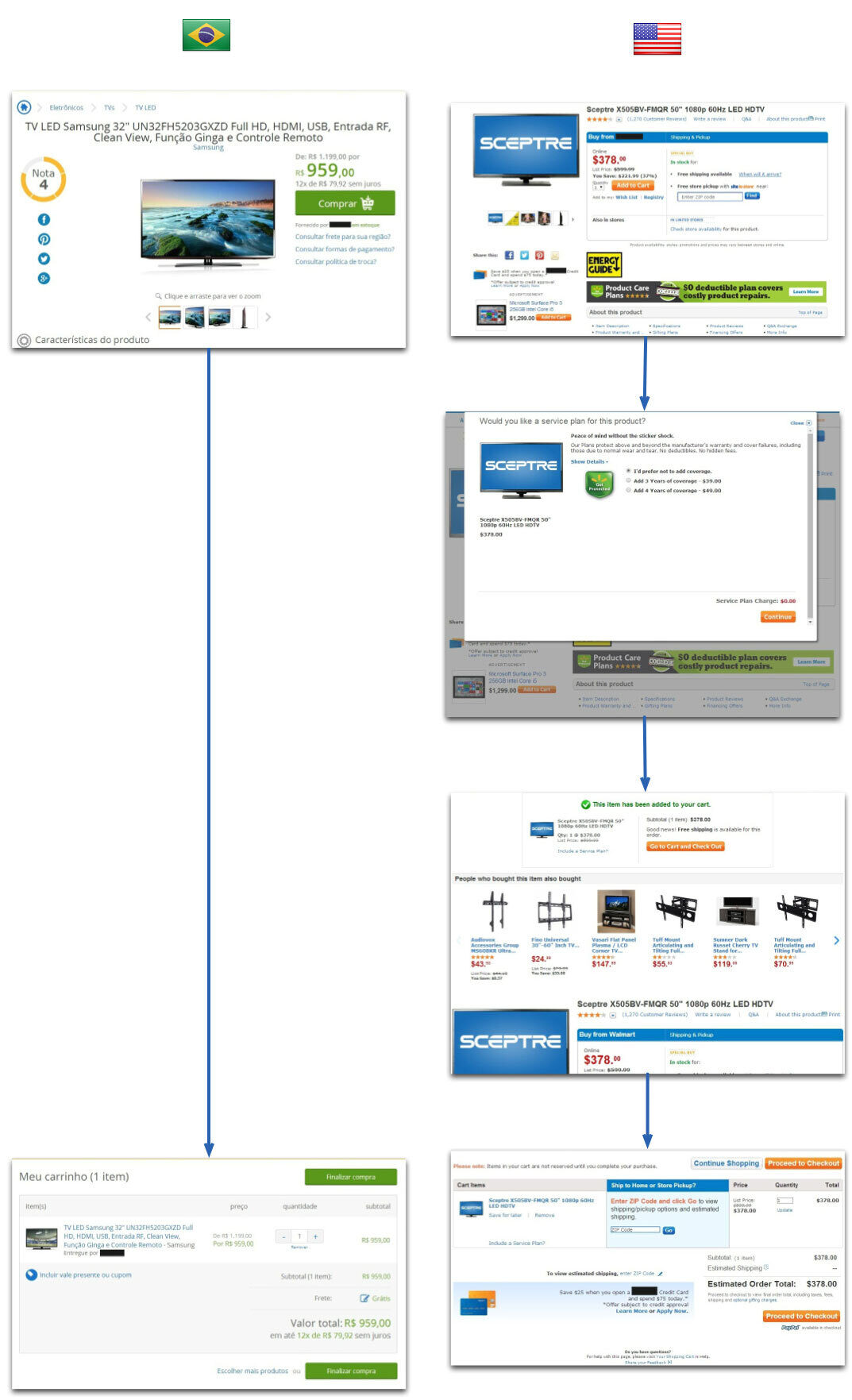
On the first page of checkout, both versions ask for zip code to determine shipping options and costs. Both in Brazil and in the US it's common to offer a free shipping option for big ticket item when the delivery address is near to large city centers.
Only the US e-commerce sites gives the option for products to be picked up in one of their stores. It is not common for large Brazilian retailers with physical stores to offer such an option.
Step 2: Registration
With a zip code provided, both version of the checkout flows ask for client identification. The US checkout flow often includes an option for guest registration, which refers to a one-time quick registration that does not create an account on the website.
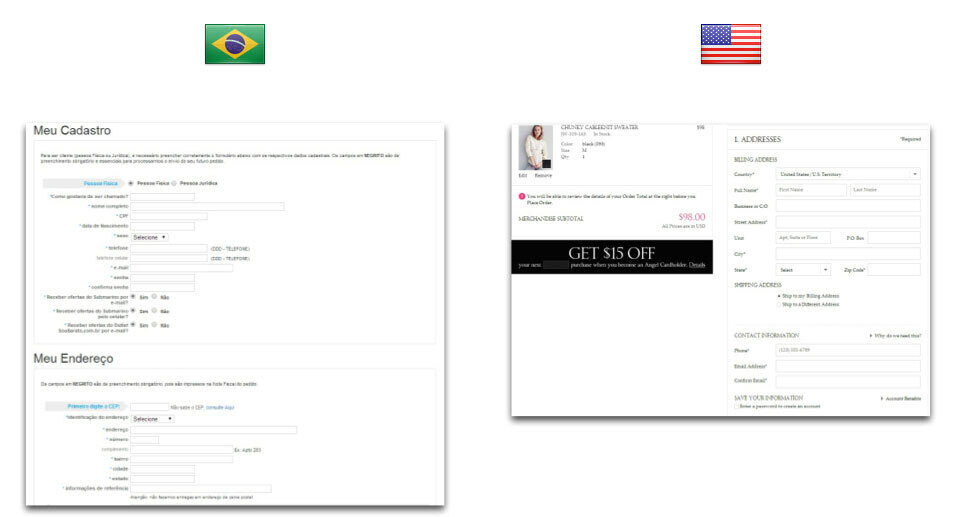
Both the US and the Brazilian checkout flow require name, address, email and telephone number but only the Brazilian version require the taxpayer ID, either a CNPJ or CPF. Brazilian e-commerce sites will usually verify if the customer have registered previously an account on the same taxpayer ID and report an error if this is the case.
Another small difference is how the US e-commerce sites frequently displays the SSL seal on the registration page. On Brazilian pages the seal is much less prominent.
Step 3: Address and Shipping
Both the Brazilian and US checkout flows require the standard information for delivery, surprisingly few checkout flows remember the zip code selected in Step 1 when calculating the freight cost. This is the case both in US and Brazil.
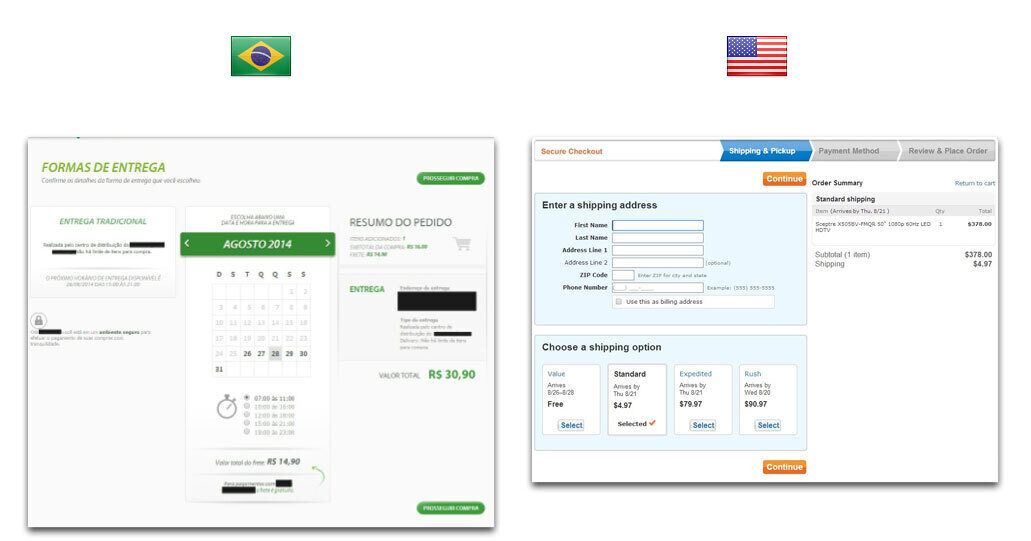
Information required is: name of recipient, street name, house number, ZIP code and telephone number. The Brazilian checkout flow also usually ask for the address type, if it is a commercial or residential address.
In Brazil customer normally have only one shipping option but a granular control on what day and on what period of the day that the product should be delivered. The choice of day and time is free to the user, as it does not affect the final cost in any way.
In US it is common to give 4 or more shipping options depending on the urgency on the product delivery, which increase in price depending on the imminence. If you are placing an order with a major offline retailer in the US it is often also an option to pick up the product on one of the retailer’s supermarkets, this is not the case in Brazil.
Step 4: Payment options
By the end of the checkout process, both checkout flows ask for the payment information.
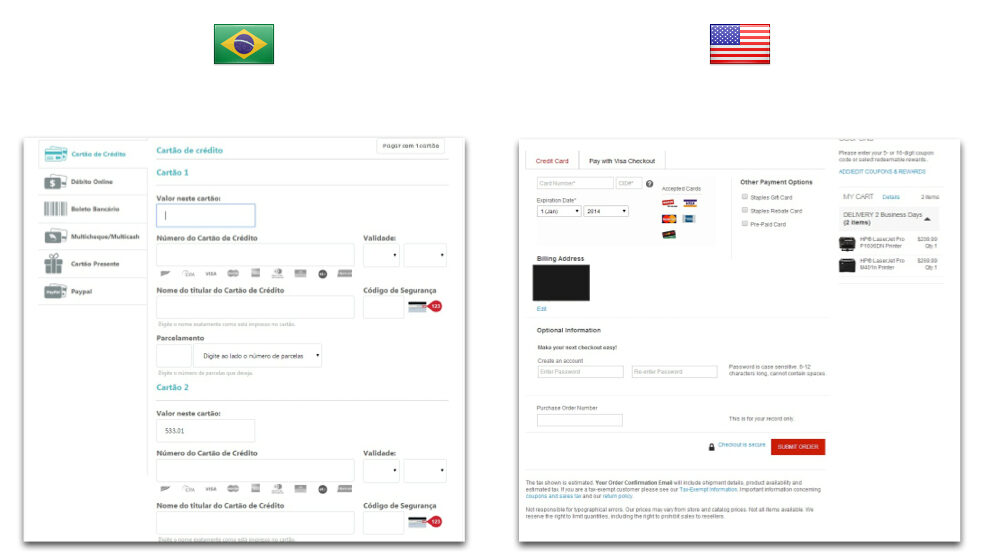
The US checkout flow lists typical methods, such as credit card, PayPal, gift card, and invoicing services, and some companies also offering the customer the possibility to pay with cash at a nearby retail store.
The typical Brazilian checkout flow also offer various payment methods but such as credit card, PayPal but also Boleto Bancário and direct debit. It is important to highlight that payment by credit cards can be split between two separate cards, a common practice in Brazil for customers with limited financial resources.
Customer Service in Brazil
Assistance and Customer Service information is usually much more prominent throughout the Brazilian checkout flow compared to the US checkout flow. Highlighted contact information usually include info on how to contact customer service in case of questions by means of online chat, email or telephone call.
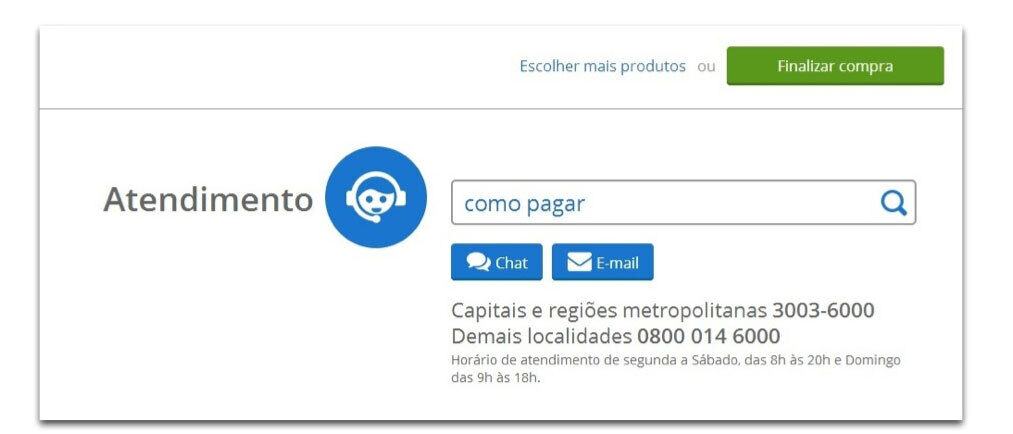
A strong focus on customer service is often emphasised as a way to reach new online customers in Brazil. There is still an education process and much of the population is still not familiar with e-commerce as a way of purchasing goods and services.
Optimise the Checkout Flow in Brazil
When aiming to optimise the checkout flow you will rely on local knowledge and a technical platform that allows you to perform comparable testing of the optimisation activities.
Localization of e-commerce business to fit the Brazilian market goes far beyond translation of content. The example in this article highlighted a checkout flow from a major supermarket chain that offers a wide variety of products, but each industry and sector require specific customization and testing.